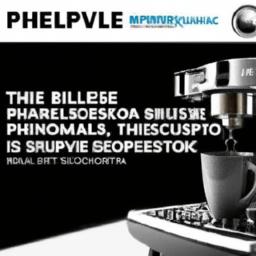Serrano Ham vs. Prosciutto: Decoding the Distinctive Flavors of Europe’s Finest Cured Meats
When you hear the names Serrano ham and prosciutto, they immediately evoke an air of culinary sophistication. But beyond the fancy buzzwords, what truly distinguishes these iconic hams? Which one delivers that unforgettable taste experience that can make your charcuterie board unforgettable?
Here, we’ll explore the origins, production methods, flavor nuances, and ideal uses of Serrano ham and prosciutto. By the end, you’ll be confident in picking the perfect ham for your gourmet gatherings-whether you crave bold salinity or delicate sweetness.
Origins and Terroir: How Region Shapes Flavor
The unique characteristics of Serrano ham and prosciutto stem largely from their geographical roots. Serrano derives its name from the Spanish word “sierra,” meaning mountain, as it originates from the high-altitude regions of Spain. Meanwhile, prosciutto is Italian through and through, traditionally cured in Italy’s lush valleys.
These distinct climates impact the curing and flavor profile profoundly. Serrano hams mature in crisp, dry mountain air, promoting a denser texture and intense flavors. In contrast, prosciutto ages in warmer, more humid conditions that encourage sweetness and a supple bite.
| Aspect | Serrano Ham (Spain) | Prosciutto (Italy) |
|---|---|---|
| Environment | Cool, dry mountainous regions | Mild, humid lowlands and valleys |
| Curing Duration | 7-16 months | 9-24 months |
| Taste Profile | Earthy, robust, slightly smoky | Buttery, delicate, subtly sweet |
Adding to this complexity, the diet of the pigs plays a crucial role. Spanish pigs often forage on acorns in vast oak forests-known as “montaneras”-imparting a unique nutty essence to Serrano ham. Italian pigs, on the other hand, typically consume a mix of grains and cereals, which contributes to prosciutto’s mild sweetness and softer texture. These details are like different brushstrokes in a painting, creating distinct masterpieces on your palate.
Craftsmanship Behind the Cure: Crafting Excellence Through Tradition
Both Serrano ham and prosciutto begin their journey as fresh hind legs of pork, but it’s the curing process where tradition meets art and patience. The methodical sequence of salting, drying, and aging transforms fresh meat into gastronomic treasures.
Serrano ham is initially salted for about two weeks, then left to dry in naturally cool mountain environments over several months, allowing the meat to develop depth and firmness. Prosciutto is cured similarly but often involves controlled humidity and temperature in curing chambers, where it matures more slowly, sometimes for up to two years.
- Serrano Ham: Salt curing followed by natural air-drying in the cooler Spanish highlands.
- Prosciutto: Salt curing combined with climate-controlled aging to balance moisture and tenderness.
| Process Stage | Serrano Ham | Prosciutto |
|---|---|---|
| Salt Curing | 10-14 days | 12-20 days |
| Drying & Aging | 7-16 months | 9-24 months |
| Environment | Mountain air with natural airflow | Humidity and temperature-controlled rooms |
Notably, the controlled environment in prosciutto production aligns with the Italian emphasis on finesse, while Serrano reflects raw, alpine ruggedness. This curing mastery shapes their flavor balance and texture complexity.
Taste and Texture: Exploring The Sensory Contrast
Flavor Spectrum: Salty Boldness Meets Subtle Sweetness
If hams were personalities, Serrano would be the adventurous, spicier one, while prosciutto would come across as soft-spoken and elegantly sweet. Serrano offers pronounced salty notes with earthy undertones and just a touch of smoke, enticing those who prefer a savory punch. Prosciutto, conversely, is lighter on the salt and layered with nuanced buttery and fruity hints.
- Serrano Ham: Saline, nutty, with a gentle tang that wakes the palate.
- Prosciutto: Mildly sweet, creamy, with an aromatic finish.
| Ham Type | Sweetness Level | Characteristic Flavors |
|---|---|---|
| Serrano | Low | Salty, Nutty, Slightly Tangy |
| Prosciutto | Moderate | Buttery, Delicately Sweet, Floral |
Texture Showdown: The Mouthfeel Experience
Texture contributes immensely to the enjoyment of cured hams. Prosciutto, sliced paper-thin, is famously tender and melts luxuriously on the tongue due to its higher fat marbling. Serrano, by contrast, is sliced slightly thicker, boasting a firmer, chewier bite that holds to its meaty character firmly.
- Prosciutto: Silky, soft, with a creamy mouthfeel.
- Serrano: More substantial bite, with a hint of graininess from salt crystals embedded during curing.
| Ham | Texture | Mouthfeel |
|---|---|---|
| Prosciutto | Soft and silky | Melts effortlessly |
| Serrano | Firm and slightly chewy | Resilient and textured |
Perfect Pairings: Elevating Flavors with Drinks and Sides
Pairing the right beverages and foods can elevate your ham experience remarkably. Understanding the personality of each ham helps guide these thoughtful matches.
Best Companions for Serrano Ham
- Bold reds such as Spanish Tempranillo or Rioja amplify Serrano’s savory robustness.
- Dry Sherry brings out nutty undertones, creating harmonious layers.
- Sparkling mineral water with a hint of citrus refreshes the palate between bites.
- Pair with aged Manchego cheese or roasted Marcona almonds for a rich, intense flavor combination.
Prosciutto’s Ideal Matches
- Light whites like Pinot Grigio or crisp Prosecco complement prosciutto’s gentle sweetness.
- Rosé wines balance buttery richness without overpowering it.
- Non-alcoholic options such as chilled apple cider provide a sweet counterpoint.
- Enjoy alongside fresh melon, figs, or soft cheeses like burrata or fresh mozzarella for a classic, elegant bite.
| Ham | Ideal Drinks | Complementary Flavors |
|---|---|---|
| Serrano Ham | Tempranillo, Dry Sherry, Sparkling Water | Intensifies saltiness and earthiness |
| Prosciutto | Pinot Grigio, Prosecco, Apple Cider | Accentuates sweetness and smooth texture |
Cooking Potential: How These Hams Respond to Heat
While both Serrano and prosciutto are often savored raw to preserve their flavors, each behaves differently under heat.
Serrano ham’s firmer structure makes it suitable for gentle cooking. Lightly warming it can unlock nuttier and deeper flavor layers, perfect for wrapping around grilled vegetables or finishing off warm tapas dishes.
Prosciutto, due to its thin slices and high-fat content, melts quickly under heat. A brief sear can give it delightful crisp edges ideal for pizza toppings or crispy salad garnishes. But overcooking risks an oily or rubbery texture.
| Ham Type | Recommended Cooking Style | Heat Resistance | Flavor Impact |
|---|---|---|---|
| Serrano | Light sauté, oven warming | Moderate-texture holds firm | Flavor intensifies, becomes nuttier |
| Prosciutto | Quick sear or crisping | Low-melts rapidly | Crisps up with new texture, slight oiliness |
Pricing Insights: Where to Invest Your Gourmet Dollars
Budget considerations are important when navigating between these premium hams. Serrano ham generally offers excellent value, with prices ranging broadly between $15 to $30 per pound.
Prosciutto, reflecting its extended curing and intricate aging methods, commands a higher price, often between $20 and $50 per pound, depending on quality and origin. Artisanal and aged prosciuttos can reach premium levels well beyond.
| Ham | Average Cost per Pound | Price Drivers |
|---|---|---|
| Serrano Ham | $15 – $30 | Mountain curing, aged 7-16 months |
| Prosciutto | $20 – $50+ | Longer aging, delicate production |
Your choice hinges on occasion and preference: Serrano offers everyday elegance with budget in mind, while prosciutto suits special celebrations where price may stretch for exquisite experience.
Proper Storage: Keeping Your Ham Fresh and Flavorful
Maintaining the perfect texture and flavor of Serrano ham and prosciutto depends on proper storage. Both appreciate cool, dark environments away from direct light and heat.
Avoid sealing in plastic wrap directly. Instead, wrap whole legs in breathable cloth to avoid moisture buildup. For sliced portions, using parchment paper paired with loose plastic or reusable containers helps maintain balance between humidity and airflow.
- Whole Leg: Store wrapped in cloth in a cool cellar or pantry; freshness lasts up to 3 months for Serrano, 2 months for prosciutto.
- Sliced: Keep refrigerated, wrapped in parchment and loosely sealed; best consumed within one week.
| Ham Type | Storage Method | Ideal Location | Freshness Period |
|---|---|---|---|
| Serrano Ham (Whole) | Cloth wrap | Cool pantry or cellar | Up to 3 months |
| Prosciutto (Whole) | Cloth wrap | Cool pantry or cellar | Up to 2 months |
| Sliced (Both) | Parchment + loose cover | Refrigerator | Up to 7 days |
For longer storage, freezing sliced ham wrapped individually in parchment then vacuum-sealed or bagged isolates portions and preserves flavor. Defrost slices gradually in the refrigerator to maintain texture integrity.
FAQs: Answering Your Top Questions About Serrano Ham and Prosciutto
- What is the fundamental difference between Serrano ham and prosciutto?
- Serrano ham is a dry-cured Spanish ham known for a saltier and firmer profile, whereas prosciutto is an Italian ham celebrated for its milder, sweeter taste and tender silkiness.
- How long are these hams cured?
- Serrano hams cure for approximately 7 to 16 months; prosciutto cures longer, from 9 up to 24 months, resulting in richer complexity.
- Do the pigs’ diets influence the hams’ flavors?
- Absolutely. Free-range acorn-eating pigs contribute to Serrano’s nutty essence, while grain-fed pigs help develop prosciutto’s subtle sweetness.
- Which ham has a softer texture?
- Prosciutto is known for its velvety, melt-in-the-mouth softness, unlike the firmer chew you find with Serrano ham.
- Are they interchangeable in recipes?
- They can substitute each other but expect variations in flavor and texture. Prosciutto’s sweetness and softness differ markedly from Serrano’s robust, salt-forward presence.
- What about price-is Serrano ham always cheaper?
- Serrano is typically more affordable, making it a fantastic choice for everyday indulgence, while prosciutto’s price reflects its longer aging and elaborate curing practices.
- How best to store these hams at home?
- Store whole legs wrapped in cloth in a cool, dark place and sliced portions wrapped loosely in parchment in the fridge for optimal freshness.
Summary Comparison
| Feature | Serrano Ham | Prosciutto |
|---|---|---|
| Origin | Spain | Italy |
| Cure Time | 7-16 months | 9-24 months |
| Texture | Firm, slightly chewy | Soft, silky |
| Flavor | Salty, intense | Sweet, delicate |
| Price Range | Moderate | Premium |
| Typical Uses | Tapas, cooking ingredient | Gourmet platters, salads |
Final Thoughts: Choose Your Culinary Companion
In the flavorful duel of Serrano ham versus prosciutto, neither is truly better-just different. Serrano’s bold saltiness and robust texture offer a compelling choice for hearty dishes and budget-conscious gourmets. Prosciutto’s subtle sweetness and silkiness shine in delicate presentations and elegant pairings.
Why not savor both side by side at your next tasting? Exploring their nuanced profiles could become your new favorite gastronomic adventure. After all, culinary discovery is a journey best taken one delicious bite at a time.
Which will you invite to your table? The choice is yours-and either way, you’re in for a gourmet treat.




